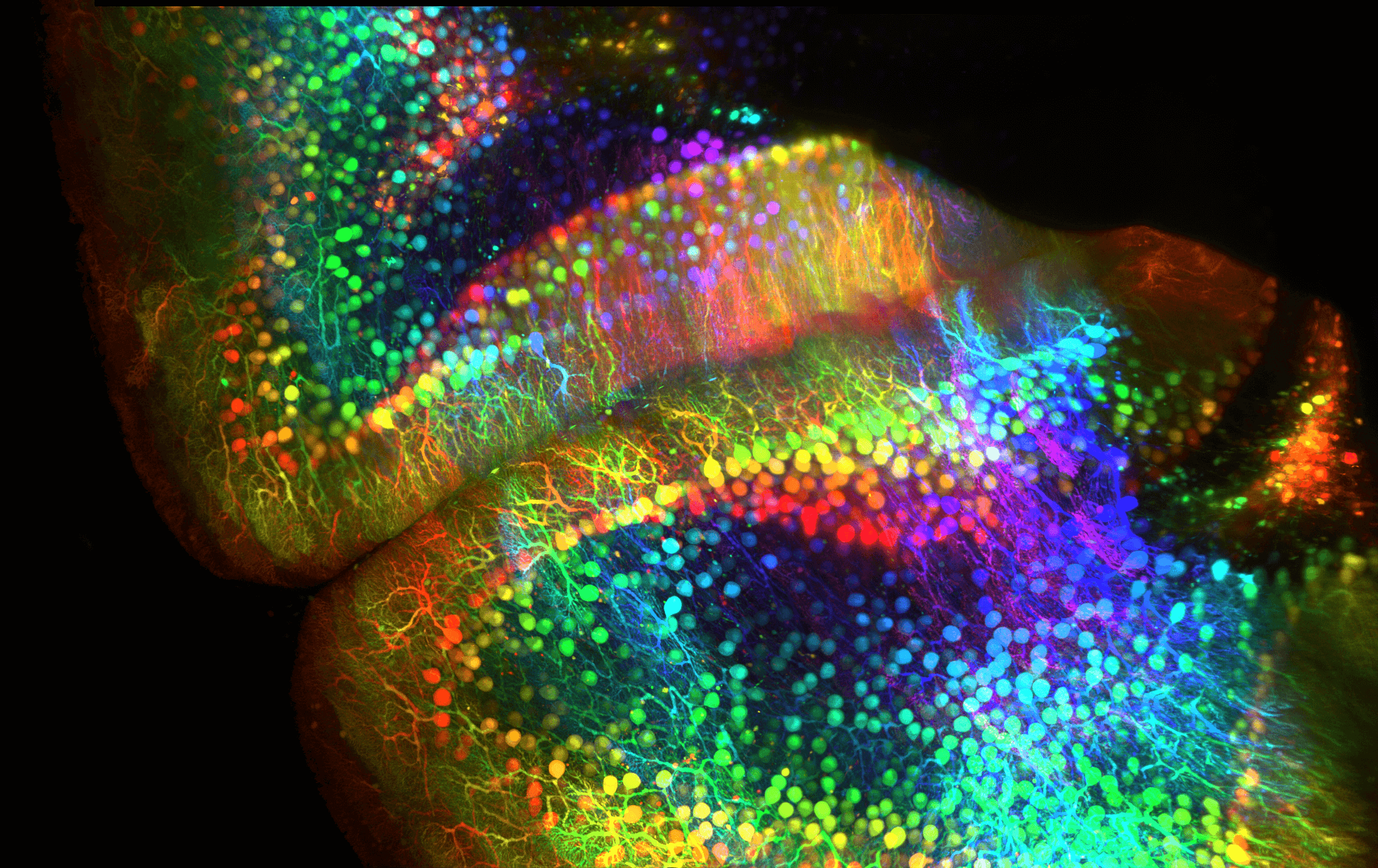Unlocking the Secrets of Biology With Novel 3D Imaging Technology

Shoh Asano’s grandfather first taught him how to use a microscope as a child. He’d pull the antique instrument from its wooden box to examine leaves and other specimens gathered outdoors. “I’ve always been interested in looking deeper into the natural world to visualize life directly as it’s happening,” says Asano, who grew up in Germany.
Three decades later, Asano is among a group of researchers recognized for using cutting-edge microscopy techniques to show the mouse brain in unprecedented detail. Their work is commended in a recent blog post by Dr. Francis Collins, Director of the National Institutes of Health. The findings are also published in a Science paper. Asano was a post-doc researcher at MIT during the mouse brain study.
And now, Asano, as a Senior Scientist at Pfizer’s Kendall Square Research site, is applying his microscopy skills in advanced 3D imaging and analyses to help colleagues better understand the human body and disease. “It’s pretty amazing with the amount of exploratory freedom he’s had to help our biologists better understand what disease conditions look like in physiologically intact environments,” says Katherine Hales, Head of the Optical Microscopy Technology Center at Kendall Square, who works with Asano.
Asano and Hales are both experts in light-sheet microscopy, an emerging technique rarely used in pharma, which allows scientists to view biological samples in their environment in 3D. Compared to traditional microscopy, this new technique allows scientists to view larger, intact samples (sometimes even whole organs) at cellular resolution at faster speeds. It’s like being able to see the “forest” and each “tree” at the same time — all in 3D. “By being able to image a large sample but still count individual cells, you can capture unique data that you won’t get with other approaches,” says Asano.
Read on to learn more about how recent developments in 3D imaging are helping researchers unlock new discoveries into how the human body and disease work.
How it works
Light-sheet microscopy works by sending a thin sheet of laser light through the volume of the sample, producing a single image slice, which is captured by a camera. By scanning the light over the whole sample and compiling multiple slices, scientists can create and render a full 3D image. “It’s like walking into an airport scanner, which scans your body from front to back, producing a 3D image of you. This is somewhat analogous to what the light-sheet microscope is doing at a much higher resolution,” says Asano.

Left: Comparing an uncleared and cleared mouse brain after tissue clearing. Tissue clearing is a week-long process where the lipids are removed in order to make them appear translucent.
Right: A 3D scan of half a mouse brain, oriented sideways. Using light-sheet microscopy allows unprecedented structural details to be captured.
Left: Shoh Asano
Right: Allison Berg and Basel T. Assaf
However, this is only part of the process. Large samples or full organs are usually much larger and will not allow laser light to effectively penetrate through the full volume. Think of the tip of your pinky finger: This is approximately the size of a mouse brain and a common sample size in some studies. “If we cannot see through our finger, neither can the microscope,” explains Asano. Fortunately, there has been tremendous research in recent years to make biological tissues transparent. Some of these techniques have been introduced at Pfizer for studies requiring both a large overview and a detailed 3D mapping of the sample. As the name suggests, the sample is nearly transparent to the human eye and can be scanned in its entire volume by the microscope.
Understanding biology in 3D
One of the major challenges in cell biology is identifying, measuring, and characterizing individual cells in their native 3D environments. Traditionally, if scientists are studying any organ of interest, they would need to produce thin slices of the organ from an animal model and examine it manually under a microscope. The shortcoming of this technique is that it doesn’t capture a full picture of the complex cellular hierarchy; also, it’s both time- and labor-intensive. With light-sheet microscopy, researchers can see detailed images of cellular organization without having to cut out a section of the sample. “For example, we can get a global image of the organizational layers of the brain and then zoom in and see which cell types are present and connected,” says Asano.

Light-sheet microscopy provides valuable data at the single cell level. In the above image of a brain subregion, individual cells are orderly aligned and can be visualized. The colors of each dot represent their depth in the brain. The red dots are closest to the surface, and the blue dots are deepest. The 3D image data collected from an individual sample are tremendously large — sometimes multiple terabytes in size (equaling a stack of around 30-40 Blu-ray discs!). Extracting useful information, therefore, requires the use of complex image processing tools on powerful workstations and extensive programming expertise.
Visualizing vasculature

An image of the vasculature, or arrangement of blood vessels, on the surface (top, yellow) and inside (bottom, orange) a mouse brain.
Robert Bell and Kevin Xuong Vinh
Another great use for large-scale, high-resolution microscopy is for mapping the vasculature of an organ. The 3D pipe network, responsible for blood and nutrient flow to every part of the body, is notoriously difficult to capture with conventional microscopy. Sectioning usually cuts these vessels, and any 3D information is lost. Other popular methods, such as X-ray, CT, or MRI, are just not precise enough to detect smaller vessels that are often only a few micrometers across, or about a tenth of the diameter of a hair.
By scanning the sample intact, 3D light microscopy allows for unique views of the vasculature, or blood vessels, in samples such as a brain or tumor. “We have some great successes with brain vessels and now expand into other areas. With tumors, we’re already able to look at the vasculature on the surface pretty well,” says Asano. These imaging techniques can help scientists better understand medicine delivery, such as nanoparticles, to tumors.
For more microscopy images captured by Pfizer’s Optical Microscopy Tech Center, click on the slideshow:





